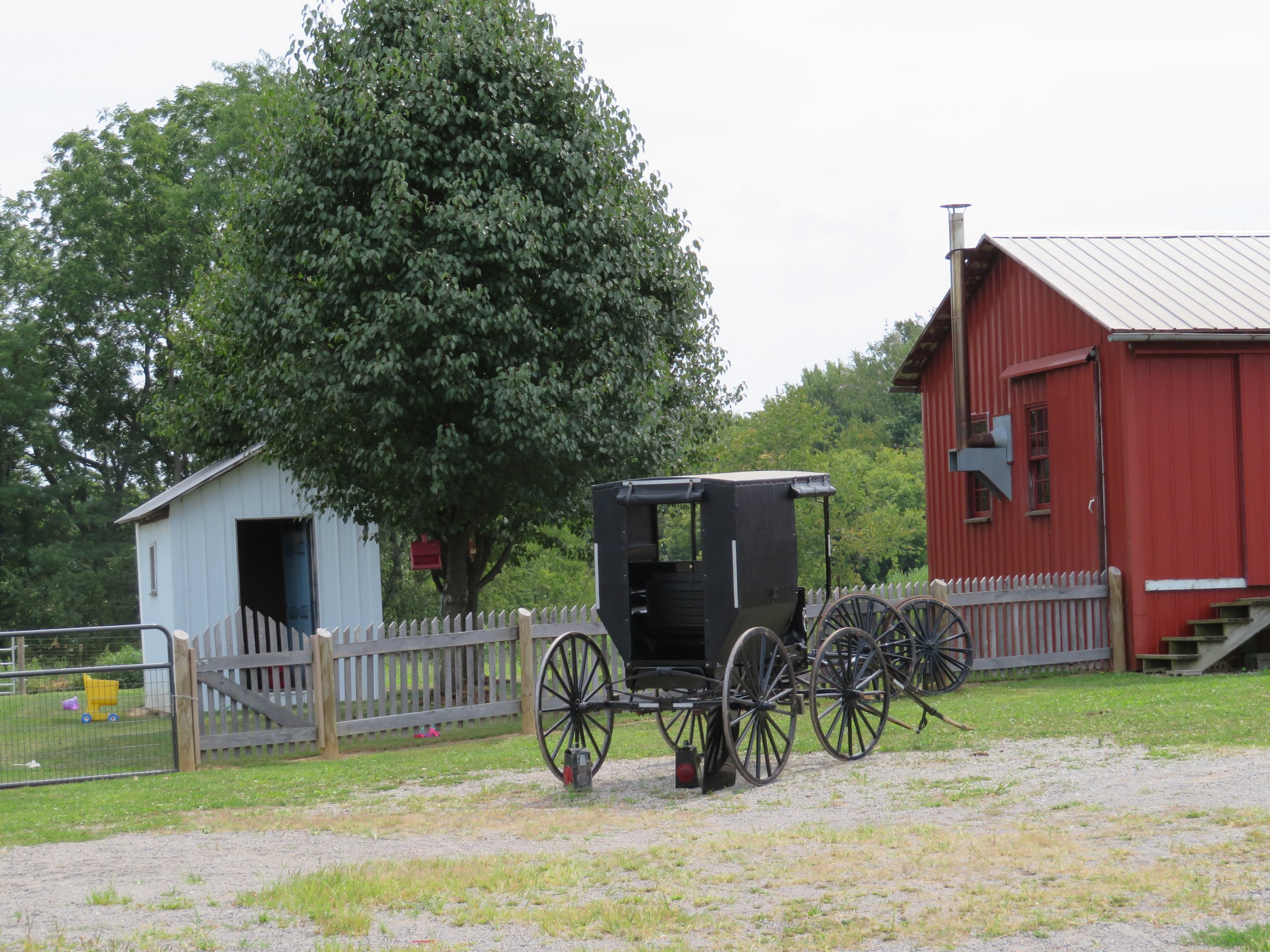Exploring Amish Country
/We’re in Ohio, smack dab in the middle of Amish Country. The population of Holmes County, Ohio is about 48% Mennonite/Amish. “ Including all communities, Ohio has the second-largest population of Old Order Amish in the world, which in 2021 was an estimated 80,240 members, second to Pennsylvania with approximately 84,000“. In fact, we’ve been camped at Amish Country Campsites, a pleasant campground owned and operated by a Mennonite couple, John and Ruth.
We’ve been anticipating a rainy day based on the last few days’ forecasts and the forecast has finally come to fruition. It’s pouring out… proverbially cats and dogs… and purports to be wet and gloomy the rest of the day. Being the pansy-asses we are, we’re not riding. Instead, we decided to take a rainy lay-day and explore the area we’re smack in the middle of… advertised and highly publicized as Amish Country.
We’ve visited Amish communities before. We even visited the Mennonite home of a friend’s friend a few years ago and were particularly impressed with the ingenuity and industriousness of the people we met, but we really never took the time to delve into the history or customs of this religious sect and way of life and we were interested to learn more.
First off, we never understood the difference between Amish and Mennonite… are they basically the same? They do share many of the same religious tenets. Both sects are part of a group referred to as Anabaptists, for instance, espousing adult baptism, believing that children are free from sin until they can distinguish between right and wrong. They’re pacifists. Though they pay income taxes on earnings like the rest of us, they’re exempt from social security and thus do not receive social security benefits at retirement nor for disabilities. Community takes care of community. They do seek medical care, but do not believe in health insurance and pay cash for all medical treatments. They can vote, but many opt not to.
Mennonite’s take their name from Menno Simons, a Dutch Roman Catholic priest who, after much deliberation, dissented with Rome on a number of philosophical issues and, with his followers, broke off from the Catholic church and began a new sect. Subsequently within his group, a schism occurred over philosophical ‘biblical discipline’ issues (shunning), causing yet another religious split. Its leader, Jakob Ammann, lent his name to the new sect, Amish. This is a very simplistic view, but you kind of get the picture. There are at least 30+ sects of Mennonites, mostly concentrated in the US and Canada. They migrated to the USA to avoid religious persecution in Europe.
More traditional Amish and Mennonites still drive horse and buggies. Amish are stricter in terms of dress, use of modern conveniences, etc. Modern or progressive Mennonites drive cars and make more use of newer technology. Mennonites tend to conduct their religious services in churches while Amish still gather at members’ homes. Simplicity, modesty and humility are their watchwords. Three basic premises of both sects that we admire are a strong commitment to community, self-sufficiency, and living and practicing their religion in everyday life, not just at Sunday services. We tried to find a place for breakfast one Sunday morning and had a tough time. Most every restaurant and shop in the area was closed. Sunday is reserved for church, family, community, and rest.
They all consider themselves ‘plain people’, not ‘fancy’ and they refer to non-Amish/Mennonites as ‘outsiders’. When they do drive cars, they’re basic and usually black or white… no red sports cars. Jewelry is a no-go. They wear plain clothes, long dresses for the women in sedate colors. Women also wear small head coverings most of the time… white for married women, black for young unmarried women. Men wear traditional black felt hats in winter and straw hats in summer. Women do not typically cut their hair. Men do not shave their beards after they become adults and marry. Again, each particular sect dictates how conservative or modern they are and how restrictive.
As we drove through the little towns and villages, craftsmanship, especially furniture-making, cabinetry and carpentry seemed to be a major occupation and business in the area. We saw signs and billboards and shops galore beckoning customers to stop in and look or offering custom work.
Cheese-making also seemed to be a common offering and there were cheese shops and bulk shops throughout the area.
Traffic signs alerted us to watch out for buggies. They were a common sight.
Not all of the Amish were in buggies though. Evidently bicycles and even e-bikes are acceptable and in common use.
Even the local Walmart accommodated buggy parking with covered hitching posts. Water was available for the horses and shovels stood at ready for clean-up.
A section of the Holmes County Trail was extra wide to accommodate buggies and actually had a separate buggy lane. Sometime we’d see signs for buggies, horses, bikers and walkers. We met a few buggies on our bike rides. Everyone was friendly. They waved and smiled and said good morning.
A couple of unique things we came across. The world’s largest buggy at the Wendell August Forge which was quite an interesting place even without the buggy..
The world’s largest cuckoo clock resides in Sugarcreek, also known as Little Switzerland.
Though different in their beliefs and customs than David and I, we have been enjoying learning more about the Amish and Mennonites and their way of life. Seems the more we learn about people, the more accepting we become of their differences and the more we can appreciate our similarities.















